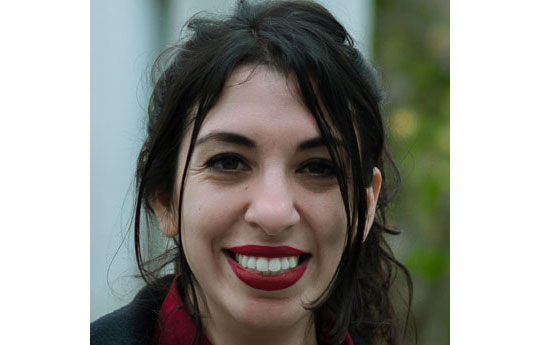Dr Ximena Fernandez
Swansea University, Department of Mathematics - College of Science
Mathematics & Physics
Swansea University, Department of Mathematics - College of Science
Mathematics & Physics
Dr Ximena Fernández (XF) is a Research Officer at Centre of Topological Data Analysis in Swansea University. Her specialty is algebraic and combinatorial topology, having a particular interest in developing and applying cutting-edge mathematical and computational techniques to solve real world problems. She develops and applies Topological Data Analysis techniques to find geometrical signature on high dimensional data sets.
It was a long path. I obtained a degree in Mathematics from the University of Buenos Aires (Argentina) in 2011. Then, I made a PhD in Pure Algebraic Topology, in which I formulated an algorithmic and computational approach to a long-standing open conjecture.

When I finished my PhD, I began to be interested in applied problems. I have worked as a data scientist,solving modeling and predictive problems from areas ranging from electric energy consumption to automatic real estate valuation.
Over time, I realized that my true goal was to take part in a scientific interdisciplinary project. That is why I decided to apply for a postdoc position at the Centre of Topological Data Science at Swansea University.
I have enjoyed science classes since I was a child. Biology and Chemistry were my favorite subjects at school. Paradoxically, I didn’t like Math! In general, Math at school tends to be boring, full of formulas and mechanic computations without a concrete motivation. One dayat school, my teacher proposed to participate in Math Olympiads, and that day I could discover what really Mathematics is. It is not about numbers, it is about concepts and ideas. It about discovering the winning strategy of a game or the optimal way to perform a complex process.
My work is purely theoretical, abstract. It is not based on analysis of data, or usage of computational software. However, it is deeply rooted in the work of others before us. The work is conceptual: it’s really about finding our way in the labyrinth of knowledge, trying to see things in the right light, creating order in the seeming chaos. Eminent mathematician Yuri Manin compared this process to trying to discern the outlines of a castle in deep fog.
I look for patterns in data, set the abstract formulation of the problem and finally develop the theoretical results to build the appropriate foundations of the theory that will help to solve the original problem.
Thus, piece by piece, my work is like solving a puzzle.
I hope that the inequality in the access to both benefits of science development and also to formationand research opportunities in science will be fixed some day. Doing research in science may not be to interest of everybody, but the improvements in development and access to scientific advances should be.
I enjoy photography and art in general. I am an amateur photographer, particularly keen on vintage types of photographing and development.
I also like comedy shows, and I believe that learning process should also be fun. So I enrolled in a stand up course to improve my skills and apply this new approach to teaching. I think my students enjoyed it!
If I had to define myself, I would say that I am an outdoor person, I often do trekking in mountains and like to travel a lot. I take pleasure in the discovery process that these activities involve.